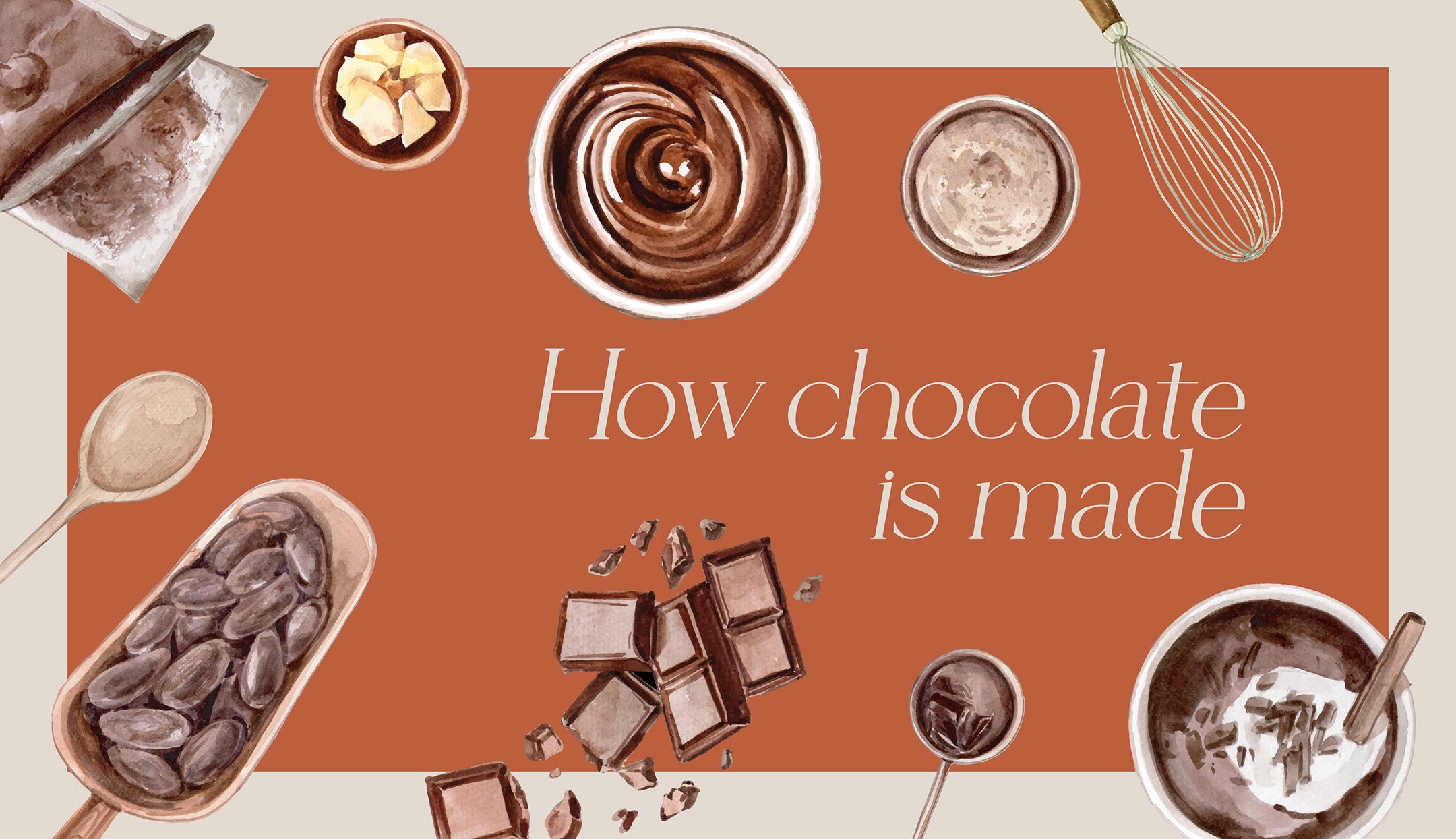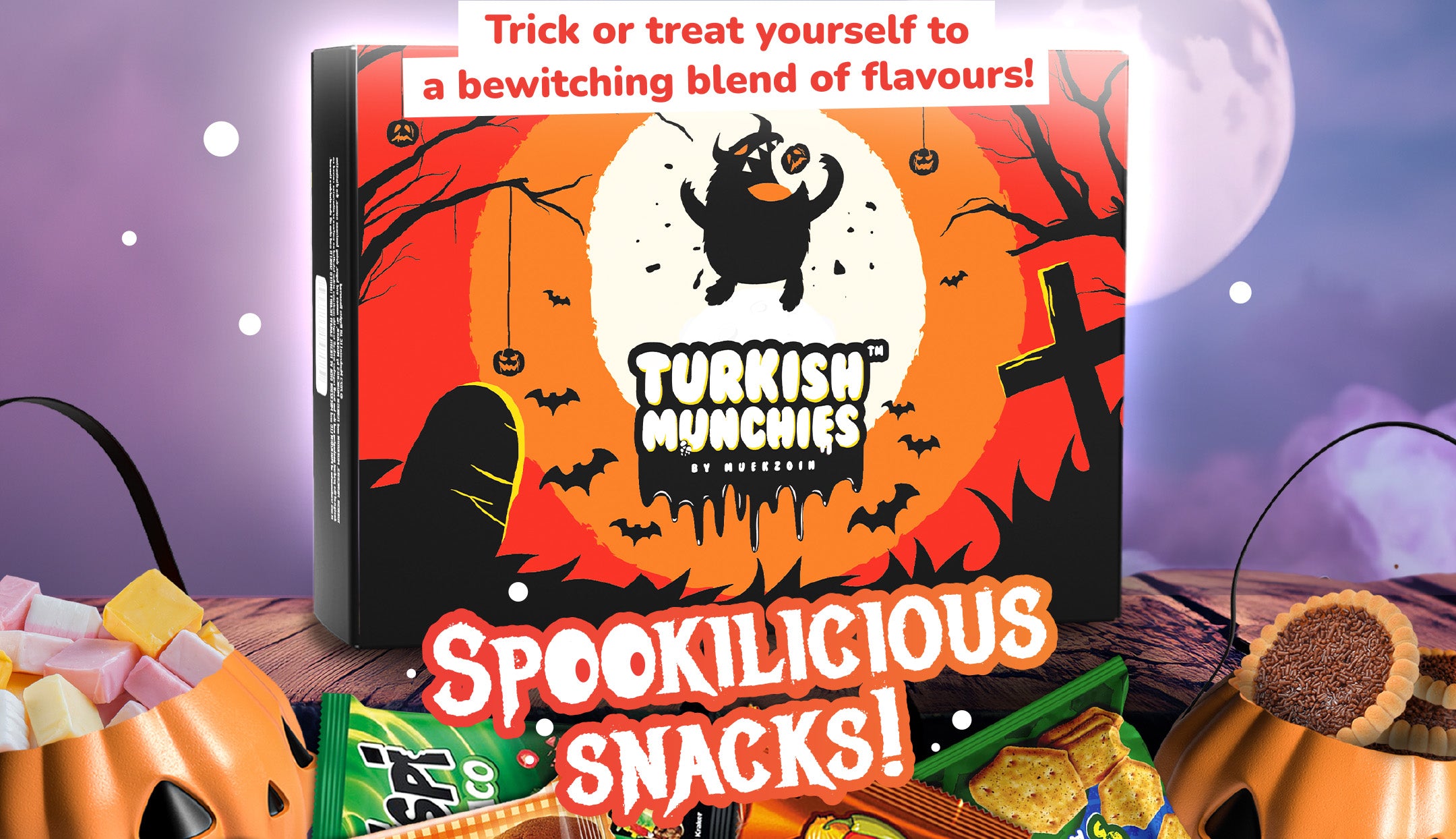How chocolate is made?

World Chocolate Day is almost here, that’s why we wanted to give you insights on how the best snack in the whole world is made. Chocolate is one of the most beloved treats enjoyed by people all around the world. But have you ever wondered how this delectable delight is made? The process of making chocolate is a fascinating journey that involves several steps, transforming raw cocoa beans into the rich and luscious chocolate bars we love and offer you. Let's explore the art of chocolate making, from bean to bar.
Step 1: Harvesting and Fermentation
The journey of chocolate begins on tropical cocoa farms, primarily located in regions near the equator. The cocoa trees bear large colorful pods, each containing dozens of cocoa beans. These beans are carefully harvested by hand. Once harvested, they are removed from the pods and placed in large fermentation boxes, allowing natural fermentation to occur. Fermentation is a crucial step that develops the flavor and aroma of the chocolate. Over the course of several days, the beans undergo chemical changes and are transformed into a deep brown color.
Step 2: Drying
After fermentation, the beans are spread out to dry in the sun. This process can take up to a week, during which the beans are regularly turned to ensure even drying. Drying removes excess moisture and reduces the risk of mold or spoilage. Once the beans are sufficiently dry, they are ready for the next step.
Step 3: Roasting
They are roasted to bring out the complex flavors locked within the cocoa beans. Roasting also helps to further dry the beans and remove any remaining acidity. The beans are gently roasted at controlled temperatures, allowing them to develop their characteristic taste and aroma. The duration and temperature of roasting can vary, depending on the desired flavor profile.
Step 4: Grinding and Conching
The roasted cocoa beans are now ready to be transformed into chocolate liquor. The beans are finely ground into a paste called cocoa mass or cocoa liquor. The grinding process generates heat, which melts the cocoa butter present in the beans. This liquid cocoa mass is then further refined through a process called conching. Conching involves continuously mixing and kneading the chocolate to enhance its smoothness and texture. The longer the conching process, the smoother and silkier the chocolate becomes.
Step 5: Tempering
Tempering is a crucial step in the chocolate-making process, as it determines the final texture and appearance of the chocolate. The chocolate is heated and cooled in a precise manner to encourage the formation of stable cocoa butter crystals. This process gives the chocolate a glossy shine, and a satisfying snap, and prevents it from easily melting at room temperature.
Step 6: Molding and Packaging
Once tempered, the chocolate is poured into molds to give it its desired shape. It is then cooled and solidified. After the chocolate has hardened, it is carefully removed from the molds and packaged for distribution. Chocolatiers may also add various ingredients like nuts, fruits, or flavorings at this stage to create different flavors and textures.
From the humble cocoa bean to the mouthwatering chocolate bar, the process of chocolate making is a labor of love. Each step, from harvesting and fermenting the beans to grinding, conching, and tempering, contributes to the final product's flavor, texture, and appearance. The next time you enjoy a piece of chocolate from Turkish Munchies, take a moment to appreciate the artistry and craftsmanship that goes into creating this delightful treat. After all who wouldn’t want a bite from a delicious foreign chocolate from all around the world? Turkish Munchies only offers top and gourmet chocolates from Turkey so that you will taste the best-flavored chocolates.
Here is the link to our chocolate box:

References:




